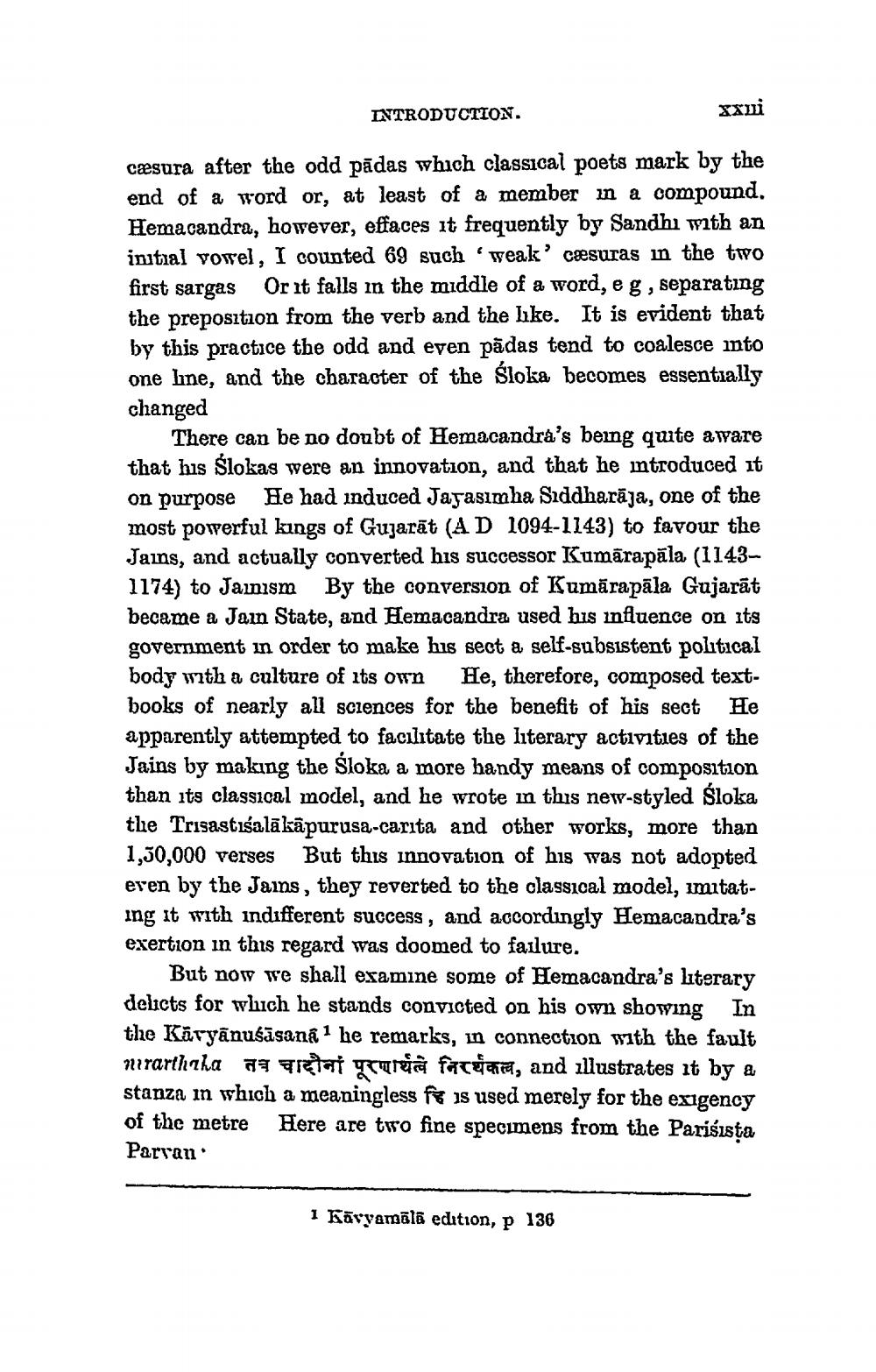________________
INTRODUCTION.
xxni
cæsura after the odd padas which classical poets mark by the end of a word or, at least of a member in a compound. Hemacandra, however, effaces it frequently by Sandhi with an initial vowel, I counted 69 such weak' cesuras in the two first sargas Or it falls in the middle of a word, e g, separating the preposition from the verb and the like. It is evident that by this practice the odd and even padas tend to coalesce into one line, and the character of the Śloka becomes essentially changed
There can be no doubt of Hemacandra's being quite aware that his Šlokas were an innovation, and that he introduced it on purpose He had induced Jayasimha Siddharāja, one of the most powerful kings of Gujarat (AD 1094-1143) to favour the Jams, and actually converted his successor Kumārapāla (11431174) to Jainism By the conversion of Kumārapāla Gujarāt became a Jain State, and Hemacandra used his influence on its government in order to make his sect a self-subsistent political body with a culture of its own He, therefore, composed textbooks of nearly all sciences for the benefit of his sect He apparently attempted to facilitate the literary activities of the Jains by making the Śloka a more handy means of composition than its classical model, and he wrote in this new-styled Śloka the Trisastisalā kāpurusa-carita and other works, more than 1,50,000 verses But this innovation of his was not adopted even by the Jains, they reverted to the classical model, imitating it with indifferent success, and accordingly Hemacandra's exertion in this regard was doomed to failure.
But now we shall examine some of Hemacandra's literary delicts for which he stands convicted on his own showing In the Kavyanusāsana1 he remarks, in connection with the fault rarthaka तत्र चादीनां पूरणार्थत्वे निरर्थकत्ल, and illustrates it by & stanza in which a meaningless fe is used merely for the exigency of the metre Here are two fine specimens from the Parisista Parvan
1 Kavyamālā edition, p 136




